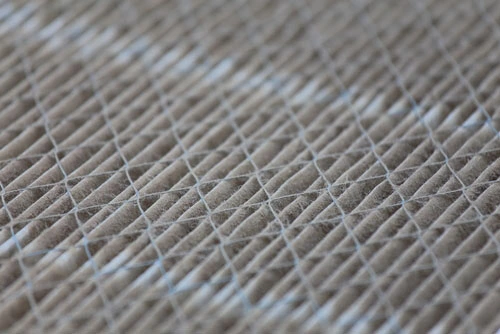Blog
Introduction

Manage Winter Allergies and Keep Your Indoor Air Quality High. Although most people think of spring and summer when it comes to allergies, the truth is that allergens can wreak havoc during the winter as well. When dust, pet dander, mitigate, and mildew are left unchecked, an unhealthy living space may result.
Mild allergic reactions are bothersome, at best, but severe reactions can be fatal. And considering the fact that you likely spend more time inside during the winter than you do during the warmer months, it’s vital that you’re diligent about keeping allergens at a minimum.
With some relatively simple steps, you can combat such pollutants and better protect yourself and your family. Learn more about allergens and indoor air quality, and what you can do to breathe easier come winter.
Allergens And Indoor Air Quality
Pet Dander Allergies
If someone in your home is allergic to pet dander, chances are an allergist recommended finding a new home for your furry loved one. Such news can be heartbreaking for your family. And while some pet dander sensitivities are so severe that this may be necessary, in many cases preventative care can keep your family intact, with the four-legged members included.
To keep reactions to pet dander at bay you should:
- Wash your hands right after petting your dog or cat. Be sure to not touch your eyes until your hands are thoroughly cleaned.
- Make sure your pet is brushed outdoors every day and bathed weekly, preferably by someone who isn’t sensitive.
- Make bedrooms pet-free zones and don’t allow your pet on top of any furniture in your home.
- Turn on an air cleaner for a few hours each day.
- Vacuum all carpeted areas every day, and give them a deeper steam clean every few months.
- Dust all the surfaces of your home with a damp cloth two times each week.
- Keep your home well-ventilated by opening windows when possible and using exhaust fans as needed.
- Schedule maintenance appointments annually if you have a forced-air HVAC system.
Dust Mite Allergies
There’s no way to completely escape dust; it’s everywhere. Dust provides the ideal home for dust mites, which are believed to be the cause of allergic reactions. Dust mites can breed inside your home when it’s warm and humidity levels go above 50 percent.
During its 30-day lifespan, a female mite will typically lay one egg per day. To make matters worse, once a dust mite dies, its body disintegrates into tiny pieces that can be inhaled once wafted into the air.
To control the proliferation of dust mites in your home you should:
- Use a dehumidifier whenever levels are higher than 50 percent.
- Use allergen-impermeable or plastic zip-up covers over all of the pillows, mattresses, and box springs in your home. Clean all bedding in hot water every week as well.
- Avoid having any carpeted areas in your home. Tile and hardwood floors are better for healthy indoor air quality in general. If you can’t install new flooring right now, vacuum all carpeted areas twice every week, preferably with a machine that has a HEPA filter.
- Dust all the surfaces of your home with a damp cloth at least twice every week.
- Clean drapes and other soft surfaces where dust can collect on a regular basis.
- Spray down live Christmas trees with your garden hose before bringing them inside. You should also make sure to dust holiday decorations before putting them on display.
Mitigate And Mildew Allergies
Mitigate spores are often found lying dormant on the surfaces of things like furniture, drapes, and bedding inside a home. Once these spores are exposed to moisture, nutrients and the right temperature, mitigate and mildew may begin to develop. Even those who aren’t allergic to mitigate can experience negative health consequences when it’s left to breed. Breathing issues and skin irritations are just some of the symptoms that anyone may notice after mitigate becomes a problem in their home.
To keep mitigate and mildew from taking over your house you should:
- Destroy mitigate right away with a bleach solution.
- Repair water leaks as soon as they are noticed.
- Clean all surface areas two times each week.
- Ventilate the attic and crawl spaces.
- Install a UV light system to help reduce microbial buildup in your HVAC system.
For more info on allergens and indoor air quality, please feel free to contact us anytime. Also, remember this article Manage Winter Allergies and Keep Your Indoor Air Quality High.
Share This :
Emily
Table of Contents
Discover New Blog Posts
Detecting under-slab leaks is crucial for homeowners looking to protect their property and avoid costly repairs. These leaks occur when water begins to seep through […]
In Cleveland, maintaining an effective HVAC system is essential for home comfort, especially during peak seasonal changes. Your air conditioning unit relies on its circuit […]
HVAC systems play a crucial role in maintaining the comfort and safety of homes, especially in Pecan Grove. One of the key components of these […]






 7
7 
